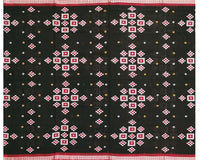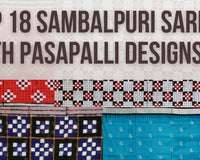Sambalpuri Saree is a traditional handwoven ikat or sari or saree (Locally called sadhi) wherein the twist and the weft is coloured before weaving. It is delivered in the Bargarh, Sonepur, Sambalpur, Balangir area, Boudh District of Odisha.
Sambalpuri sarees are known for their consolidation of conventional themes like shankha (shell), chakra (wheel), phula (blossom), all of which have profound imagery, yet the highpoint of these sarees is the customary craftsmanship of the 'Bandhakala', the Tie-color workmanship reflected in their perplexing weaves, otherwise called Sambalpuri "Ikkat". In this method, the strings are first creatively coloured and later woven into a texture, with the whole procedure taking numerous weeks.
The Sambalpuri sari is produced using texture woven on a hand-linger and is well known all through India. Varieties of the Sambalpuri sari incorporate Sonepuri, Pasapali, Bomkai, Barpali, and Bapta saris, which are sought after.
Sambalpuri textures mirror a unique style of art known as Baandha. Generally, specialists made Baandhas with pictures of vegetation or fauna or with geometrical examples. All the more as of late, new sorts of Baandha delineating picture, scene and blossom cases are being outlined. Baandha texture is made utilising a creatively coloured procedure. The yarns are fixing as per the coveted examples to forestall ingestion of colours and afterwards coloured. The yarns or set of yarns so created is called 'Baandha'. The interesting element of this type of outlining is that the plans are pondered indistinguishable both sides of the fabric.Once the texture is coloured it can never be blanched into another shading. This flexible method empowers a skilled worker to weave vivid plans, examples and pictures into a texture equipped for motivating an idea or passing on a message. Consequently, Baandha can be characterised as "A length of methodically orchestrated yarn, coloured by a biased outline in such a way in order to empower a weaver to depict the plan when the yarn is changed over to a texture through the way toward weaving".
Check the video below...








1 comment
Rohan
Great info thank you for sharing.